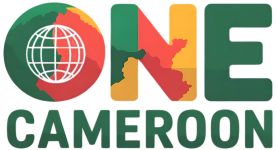Over the past decade, Cameroon’s film and television industry—often referred to as “Collywood” (from “Camerawood”)—has experienced steady growth. While Nollywood (Nigeria) and Ghallywood (Ghana) dominate West African screens, Cameroonian filmmakers are carving out their own niche. By telling authentic stories rooted in local realities—language, culture, and environment—they attract regional audiences and, increasingly, international film festivals.
One of the pioneering production houses is Kiro’o Games, known for its animated short films that blend African mythology with modern gaming aesthetics. Their trailer for “Aurion: Legacy of the Kori-Odan” showcased vibrant 2D animation, sparking interest in African-inspired game narratives. Though primarily a gaming studio, Kiro’o’s success underscored the potential for visual storytelling in Cameroon.
In live-action cinema, directors like Enah Johnscott have gained recognition. His 2014 feature “Le Tournage de Mboa” (A Cameroon Story) won Best Feature at the Ecrans Noirs Festival in Yaoundé. The film’s portrayal of a young filmmaker’s struggles resonated with aspiring creatives navigating limited budgets and infrastructure. Subsequent works such as “Therapie Taxi” (2019) and “Room 204” (2020) blended suspense, local humor, and social commentary without delving into politics—earning slots at FESPACO (Pan-African Film and Television Festival of Ouagadougou) and the Ecrans Noirs International Film Festival.
Television has also matured. Regional channels like Canal 2 International and Equinoxe TV produce popular daily soap operas such as “Les Carreaux de Mon Chiffonier” and “Kamto My Love” (a bilingual series in English and French). These shows often explore family dynamics, generational conflicts, and comedic misunderstandings—reflecting urban middle-class life in Douala and Yaoundé. By focusing on universal themes—love, ambition, betrayal—they draw diverse viewership across the country’s linguistic divide.
Documentary filmmaking is another burgeoning trend. “Cameroon en Couleurs” (2018) profiled ethnic artisans preserving traditional crafts—pottery, wood carving, and basket weaving—against the tide of globalization. Filmmaker Mouafo Andre’s “Zablon” (2020) explored the lives of street urchins in Yaoundé, winning a Special Jury Prize at the Ecrans Noirs Festival. NGOs collaborate with filmmakers to produce environmental documentaries, highlighting deforestation in the Congo Basin and conservation efforts in Korup National Park. Such collaborations often secure funding from organizations like UNESCO and WWF, enabling higher production values and broader distribution.
Streaming platforms are gradually including Cameroonian content. User-generated channels on YouTube, such as “BR Cinema” and “CamFlix,” upload short films, music videos, and talk shows catering to diaspora audiences. Weekly live streams feature interviews with local artists, from musicians to painters, discussing their creative processes. Podcasts—like “Remember Africa” and “Cameroon Today”—supplement visual media by delving into cultural, social, and entrepreneurial topics, reaching listeners in Europe and North America.
Film schools in Yaoundé and Douala provide technical training. The École Supérieure des Arts et Techniques de la Communication (ESATCOM) offers degrees in Film Production and Editing. Alumni have gone on to produce award-winning short films showcased at Cannes’ CineSud competition. Workshops on screenwriting, cinematography, and sound design are often hosted during the Ecrans Noirs Festival, fostering collaboration between established directors and emerging talent.
Local film festivals serve as crucial incubators. The Yaoundé Independents Short Film Festival (YISFF) gives young filmmakers a platform to screen 10- to 20-minute shorts. Jury members include regional producers, distributors, and festival organizers who scout for fresh voices. Winners often receive post-production grants, mentoring, and assistance with international submissions—amplifying Cameroonian stories abroad.
Challenges remain: high equipment costs, limited distribution networks, and censorship regulations. However, crowd-funding campaigns—run on platforms like Mcentral and GoFundMe—help finance indie projects. Partnerships with Nigerian production houses facilitate co-productions, pooling resources and tapping into Nollywood’s expansive market.
As technology becomes more accessible—DSLR cameras, drone rigs, and editing software—Cameroon’s film and television scene is poised for further expansion. By focusing on authentic narratives—rooted in daily life, folklore, and contemporary issues—Cameroonian creatives continue to build a vibrant audiovisual industry that reflects the country’s diversity and ingenuity.









